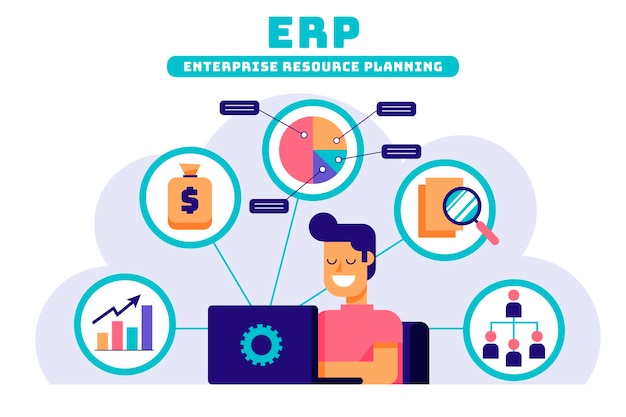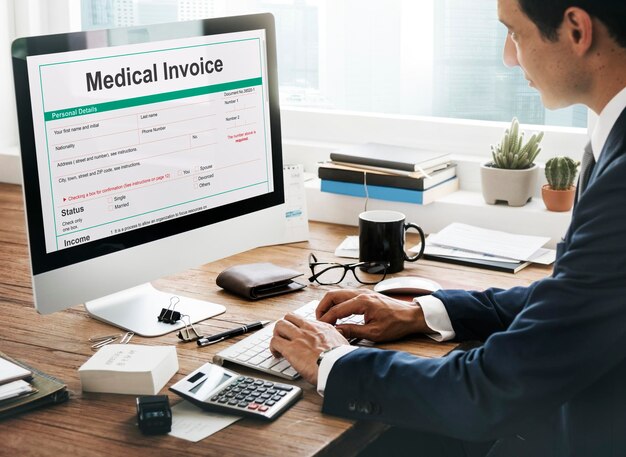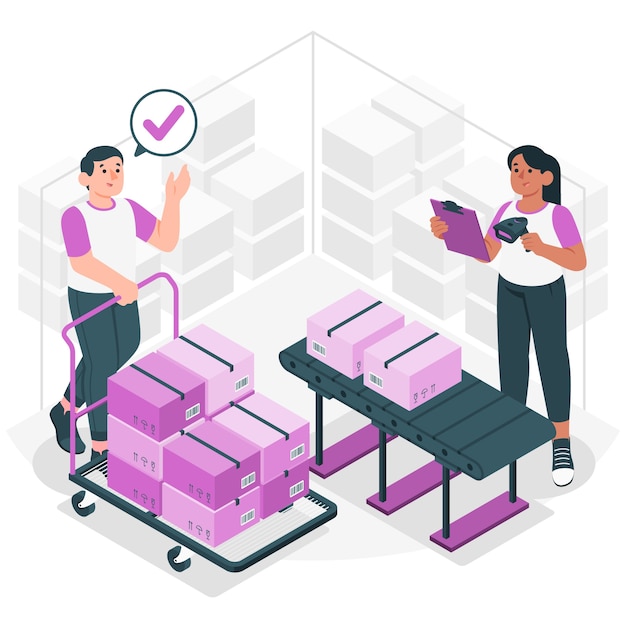ERP MRP: Key Differences, Benefits, Planning And Choosing The Right Systems
When businesses look for ways to streamline operations, ERP MRP often comes up as powerful solutions. But what exactly are they, and how do they differ? While both MRP and ERP systems help with resource management, they serve distinct purposes.
MRP focuses on manufacturing and material planning, while ERP integrates multiple business operations, including MRP. Choosing the right system depends on your business needs, and in this guide, we’ll explore:
The difference between MRP and ERP
How MRP evolved into ERP
Examples of ERP and MRP software
The benefits of ERP and MRP
How to decide which system is right for your business
By the end, you’ll have a clear idea of which system makes the most sense for you. So, let’s dive in!

What Is ERP And MRP?
But first, what are erp and mrp systems?
In the manufacturing sector, MRP is the acronym for Material Requirements Planning. It is a system designed for manufacturers to manage production scheduling, inventory control, and raw material procurement.
In simple words, MRP helps manufacturers determine WHAT, WHEN and HOW.
What raw materials are needed for production
How much to order to meet the demands
When to schedule deliveries
It ensures you have the right materials, at the right time, to keep your production line running smoothly.
ERP (Enterprise Resource Planning) is a broader system that helps in business management by integrating all core business functions into one platform. These include:
Inventory Management
Production planning
Order Processing
Accounting and finance
Customer Relationship Management
ERP thus provides a whole and sole platform where different departments can collaborate and share information. This not only saves time but also prevents manpower errors and duplication, which results in quick decision making across teams.
Top major industries benefitting from ERP are:
IT firms
Healthcare & Pharmaceutical
Hospitality
Food and Beverages
Retail and Consumer Goods
There was a time when MRP systems were primarily focused on basic material planning. Today, modern MRP is often integrated within a larger ERP suite, offering more advanced features and capabilities.
Take a pharmaceutical company—they might start with MRP to manage drug production, but as they expand, they’ll need ERP to handle compliance tracking, payroll, supplier contracts, and financial reporting.

Differences Between MRP And ERP
MRP and ERP systems are related to some extent. Both systems aid in resource planning and efficiency, but the difference between MRP and ERP lies in their scope and integration.
Therefore, understanding mrp erp difference can help in deciding which one to choose and when.
Below is a side-by-side comparison of erp and mrp difference table for your better understanding:
| Feature | MRP (Material Requirements Planning) | ERP (Enterprise Resource Planning) |
|---|---|---|
| Focus Area | Manufacturing & production | Used in business-wide operations |
| Key Functions | Material planning, inventory, scheduling | Finance, HR, sales, CRM, supply chain, and MRP |
| Users | Manufacturers & production managers | Cross-departmental (finance, HR, procurement, etc.) |
| Scope | Narrow (production-centric) | Broad (enterprise-wide) |
| Integration | Standalone or part of ERP | Comprehensive business integration |
| Best For | Manufacturing-focused businesses that primarily need to manage materials and production efficiently. | Companies needing to manage all aspects of their business, improve collaboration, and gain better visibility into their operations. |
How Has MRP Evolved Into ERP?
The journey from MRP to ERP has been shaped by technological advancements and business demands.
MRP I (1960s-1970s): Focused on material planning and scheduling.
MRP II (1980s): Introduced capacity planning and shop floor control.
ERP (1990s-Present): Integrated financials, HR, CRM, and supply chain management into one system.
With cloud-based ERP MRP systems, businesses now benefit from real-time data access, AI-driven automation, and enhanced cross-departmental collaboration. Companies that initially relied on MRP alone for production planning now use ERP to gain a competitive edge through complete business integration.

What Are Examples Of ERP And MRP Software?
Choosing the right software can be tricky, so let's look at some popular options in both categories.
ERP Software Examples:
ERP Automation by Ekklavya – Trusted by Education, government and B2B industries.
SAP ERP – Used by large enterprises for global operations.
Oracle ERP Cloud – Ideal for financial and supply chain management.
Zoho ERP – A budget-friendly solution for SMEs.
MRP Software examples:
MRPeasy: Cloud-based MRP software designed for small manufacturers
Fishbowl Inventory: A popular choice for QuickBooks users needing strong manufacturing and warehouse management.
NetSuite: Offers a good MRP module as part of its broader ERP suite.
It's also worth noting: Some platforms like ServiceNow, Workday, and Tally often get discussed in the ERP/MRP context. While they offer some ERP-like functionalities (like HR or service management), they're generally not considered full-fledged ERP or MRP systems on their own.
What Are The Benefits Of ERP And MRP For Businesses?
Now, after knowing it all about these systems, the question comes: why bother with ERP or MRP at all? The short answer? They make running a business way easier.
According to a recent study by Mint Jutras, businesses that implement ERP systems can see up to a 40% reduction in manual data entry. This means fewer mistakes, faster processes, and a whole lot less frustration. Plus, modern ERP and MRP solutions have evolved to eliminate many of the failures that plagued older systems.
Here are the benefits of ERP and MRP bring to the table:
1. Boost Efficiency & Automation
No more juggling spreadsheets or chasing paperwork—MRP automates material planning while ERP automates entire workflows.
Production planning becomes seamless, ensuring that the right materials are available at the right time.
Automated data entry eliminates human errors and speeds up processes.
2. Reduce Costs & Improve Financial Planning
ERP integrates financial data, helping businesses track expenses, profits, and budgets more effectively.
MRP prevents over-ordering materials, reducing waste and unnecessary spending.
Companies using ERP report better cash flow management and lower operational costs.
3. Enhance Scalability & Business Growth
Small businesses can start with MRP and upgrade to ERP as they expand.
ERP supports multiple departments, making it easier to scale operations without chaos.
Cloud-based ERP and MRP systems allow remote access, ensuring businesses can manage operations from anywhere.
4. Improve Collaboration & Data Accuracy
No more working in silos—ERP connects different teams (HR, finance, sales, production) on one system.
Real-time data updates ensure everyone is on the same page, reducing miscommunication.
Manufacturers can track inventory, production schedules, and orders in real time.
5. Strengthen Security & Compliance
ERP provides role-based access controls, ensuring that sensitive financial and customer data stays protected.
MRP ensures quality control compliance, reducing risks in industries like pharmaceuticals and automotive.
Most ERP systems are built to comply with industry regulations, ensuring businesses avoid legal headaches.
6. Better Customer Service & Order Management
ERP connects sales and customer service teams, improving response times.
Automated order tracking and billing make transactions smoother and more transparent.
Faster turnaround times = happier customers & better business reputation.

How To Choose Between ERP And MRP Systems?
By now, you must have got an understanding of what is MRP and ERP. But, how do you pick? Here's the cheat sheet:
ERP management systems are the best choice for:
Companies requiring enterprise-wide automation.
Businesses needing cross-department collaboration.
Organisations planning future expansion and scalability.
Go MRP if:
You are mainly focused on materials and production scheduling.
You have minimal cross-functional needs.
Your business needs basic supply chain planning.
If you are still confused, consider the following factors below when choosing between Erp vs MRP.
Business Size & Complexity – SMEs may start with MRP, while larger enterprises need ERP.
Industry Requirements – Manufacturing-heavy businesses often rely on MRP, whereas companies with multiple departments require ERP.
Budget & ROI – ERP is costlier but provides long-term benefits.
Integration Needs – ERP supports finance, HR, and CRM alongside production.
Final Thoughts
Both ERP and MRP systems help businesses manage resources effectively. However, choosing the right system depends on your industry, operational scope, and long-term goals.
If you are still wondering whether ERP or MRP is the best fit for your company, ask yourself:
Do I just need help with material planning and inventory? → MRP is enough.
Do I need a system that handles finances, HR, customer management, and everything else? → ERP is the way to go.
Looking for an ERP solution that offers complete automation, seamless integration, and powerful analytics? Eklavya ERP Automation is the ultimate choice.
What Makes Us Stand Out?
All-in-One Integration – Comes with asset, inventory management, HR and other solutions like:
eAIMS (Assets, Inventory & Maintenance Solution)
eOffice (Document Management System)
eHRX (HR & Payroll Management)
eCAMPUS (Campus Automation Solution)
eRecruitX (Recruitment Process Automation)
Real-Time Insights – Get up-to-the-minute reports on your inventory, financials, and supply chain.
User-Friendly Interface – No complex training needed—Eklavya ERP is built for ease of use.
AI-Powered Decision Making – Smart analytics help predict demand, optimise inventory, and reduce waste.
Cost Savings – Cut down on manual errors, reduce excess stock, and streamline workflows.
Scalability – Whether you’re a startup or a large manufacturer, Eklavya ERP grows with you.
Ready to take your business to the next level? Contact us today!
Frequently Asked Questions About ERP MRP
ERP (Enterprise Resource Management) is slightly better than MRP (Material Requirements Planning). MRP is focused on manufacturing operations only. ERP, on the other hand, includes everything MRP does, plus handles sales, customer relationships, accounting, and more.
Both ERP and MRP systems aid in production planning & scheduling, material management, inventory control, and tracking.